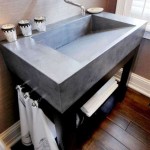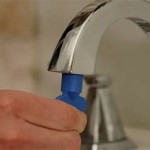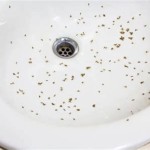How To Connect a Bathroom Sink Drain Pipe
Connecting a bathroom sink drain pipe is often perceived as a daunting task, however, with the right tools, materials, and a clear understanding of the process, it can be a manageable project for many homeowners. This article provides a comprehensive guide to connecting a bathroom sink drain pipe, covering essential components, step-by-step instructions, and common troubleshooting tips.
Before commencing the installation process, it is crucial to gather all the necessary tools and materials. These typically include:
* Adjustable wrench * Pliers * Plumber's tape (Teflon tape) * Putty knife * Basin wrench (optional, for removing old fixtures) * New drain assembly components (tailpiece, P-trap, connecting pipes) * Bucket * Clean clothsA thorough understanding of the drain assembly components is also vital for successful installation. The primary components are the tailpiece, the P-trap, and the drain pipe that connects to the wall.
The tailpiece is a vertical pipe that extends down from the sink drain flange. The P-trap is a U-shaped pipe designed to hold water, preventing sewer gases from entering the bathroom. The drain pipe is the pipe that exits the P-trap and connects to the drain pipe in the wall.
Preparing for the Installation
Prior to connecting a new drain pipe, the existing drain assembly must be removed. This process involves several steps to ensure a clean and safe removal. The first step is to shut off the water supply to the sink. Locate the shut-off valves under the sink and turn them clockwise until they are completely closed. Once the water is shut off, place a bucket under the existing P-trap to catch any residual water. Use an adjustable wrench or pliers to loosen the slip nuts connecting the P-trap to the tailpiece and the drain pipe in the wall. Carefully detach the P-trap and drain any remaining water into the bucket. Next, loosen the nut that secures the tailpiece to the sink drain flange. Depending on the age and condition of the drain assembly, a basin wrench may be required to reach and loosen this nut from above the sink. Once the nut is loosened, the tailpiece can be removed.
With the drain assembly removed, the old plumber's putty surrounding the drain flange in the sink needs to be cleaned. Use a putty knife to scrape away the old putty, ensuring the area is clean and free of debris. A clean surface is essential for a proper seal with the new drain flange. Inspect the drain opening in the sink for any damage or corrosion. If necessary, clean the opening with a suitable cleaner and a scrub brush. Ensure the opening is dry before proceeding with the installation of the new drain flange.
The installation of the new drain flange is a critical step in preventing leaks. Apply a generous amount of plumber's putty around the underside of the new drain flange. Ensure the putty is evenly distributed to create a watertight seal. Insert the drain flange into the sink drain opening, pressing down firmly to ensure good contact with the putty. From underneath the sink, attach the rubber gasket, friction ring, and mounting nut to the drain flange. Tighten the mounting nut securely using an adjustable wrench. Be careful not to overtighten, as this could damage the sink or the drain flange. Remove any excess plumber's putty that squeezes out from around the drain flange using a putty knife. This provides a clean and professional finish.
Assembling the Drain Pipes
Once the new drain flange is securely installed, the tailpiece can be connected. Slide the tailpiece up into the drain flange and secure it with a slip nut and washer. Tighten the slip nut by hand until snug, then use an adjustable wrench to tighten it further. Be careful not to overtighten, as this could damage the plastic components. The P-trap is then connected to the tailpiece. Ensure that the P-trap is oriented correctly, with the U-shaped curve facing downwards. Slide the P-trap up onto the tailpiece and secure it with a slip nut and washer. Tighten the slip nut by hand until snug, then use an adjustable wrench to tighten it further.
The final step in assembling the drain pipes is connecting the P-trap to the drain pipe in the wall. Measure the distance between the P-trap and the drain pipe in the wall. If necessary, cut a section of drain pipe to the appropriate length using a pipe cutter or a hacksaw. Ensure the cut is clean and straight. Slide the drain pipe onto the P-trap and the drain pipe in the wall. Secure the connections with slip nuts and washers. Tighten the slip nuts by hand until snug, then use an adjustable wrench to tighten them further. Again, be careful not to overtighten the slip nuts.
After completing the drain pipe assembly, careful testing for leaks is paramount. Turn on the water supply to the sink and allow the water to run for several minutes. Carefully inspect all connections for any signs of leaks. Pay particular attention to the slip nut connections and the drain flange. If any leaks are detected, tighten the corresponding slip nut slightly. If the leak persists, disassemble the connection, inspect the components for damage, and reassemble with fresh plumber's tape or putty if necessary.
Plumber’s tape, also known as Teflon tape, is essential for creating watertight seals on threaded connections. Wrap the tape clockwise around the threads of the drain pipe before connecting it to the P-trap or the drain pipe in the wall. Use several layers of tape to ensure a tight seal. Plumber's putty is used to seal the drain flange to the sink. Apply a generous amount of putty around the underside of the drain flange before inserting it into the sink drain opening.
Common Issues and Troubleshooting
One of the most common problems encountered when connecting a bathroom sink drain pipe is leaks. Leaks can occur at any of the connections, including the slip nuts, the drain flange, and the tailpiece. To troubleshoot leaks, first identify the source of the leak. Tighten the corresponding slip nut or connection slightly. If the leak persists, disassemble the connection, inspect the components for damage or wear, and reassemble with fresh plumber's tape or putty. Ensure that all components are properly aligned and that the slip nuts are tightened evenly.
A slow-draining sink can be a sign of a blockage in the drain pipe. To troubleshoot a slow-draining sink, first remove the stopper from the sink drain and check for any visible debris. Remove any debris that is present. If the sink continues to drain slowly, disassemble the P-trap and check for blockages. Clean out any debris that is found in the P-trap. A plumbing snake can be used to clear blockages further down the drain pipe. Insert the plumbing snake into the drain pipe and rotate it to break up any blockages. Flush the drain pipe with water to remove any remaining debris.
Another potential issue is improper alignment of the drain pipes. The drain pipes must be properly aligned to ensure a smooth flow of water. If the drain pipes are not aligned correctly, the water may drain slowly or not at all. To correct improper alignment, loosen the slip nuts and adjust the position of the drain pipes until they are properly aligned. Ensure that all connections are secure and that the slip nuts are tightened evenly.
In cases where the existing drain pipe in the wall is corroded or damaged, it may need to be replaced. Replacing the drain pipe in the wall can be a more complicated task that may require the expertise of a professional plumber. Consult with a plumber to determine the best course of action.
The correct size and type of drain pipe are critical for proper drainage. Ensure that the new drain pipe is the same size and type as the existing drain pipe. Using the wrong size or type of drain pipe can lead to leaks and other problems. Consult with a plumbing supply store to ensure that you are using the correct drain pipe for your sink.
Properly tightening the slip nuts is essential for preventing leaks. Tighten the slip nuts by hand until snug, then use an adjustable wrench to tighten them further. Be careful not to overtighten the slip nuts, as this could damage the plastic components. Check the slip nuts periodically to ensure that they are still tight.
Maintaining Your Bathroom Sink Drain
Regular maintenance can help prevent clogs and other problems with your bathroom sink drain. Flush the drain with hot water regularly to help prevent the buildup of grease and other debris. Avoid pouring grease or other oily substances down the drain. Use a drain strainer to catch hair and other debris. Periodically clean the P-trap to remove any buildup of debris.

How To Connect A Bathroom Sink Drain

How To Install Bathroom Sink Drain Queen Bee Of Honey Dos

How To Install Bathroom Sink Plumbing Set Up Your Own Oatey

How To Install A Bathroom Sink Drain 4 Steps With Pictures Instructables

How To Install Bathroom Sink Plumbing Set Up Your Own Oatey

How To Connect A Bathroom Sink Drain
:max_bytes(150000):strip_icc()/replacing-a-sink-p-trap-2718773-hero-f3f65fbc400e41438c4d8280de025fc6.jpg?strip=all)
How To Replace The Drain Trap On A Sink

Bathroom Sink Plumbing Installation

How To Connect A Bathroom Sink Drain

How To Replace A Bathroom Sink Drain
Related Posts







